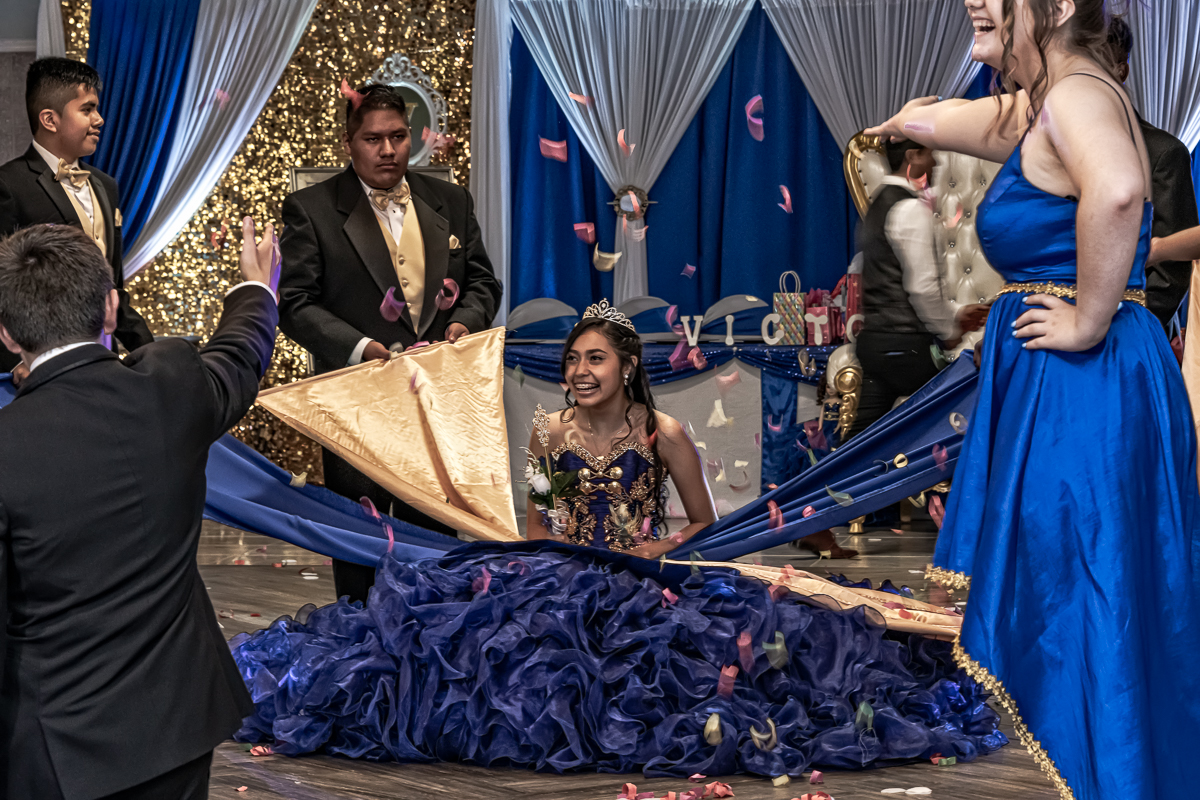The Journey of La Quinceañera
To simply view the images in this project, please click on the picture below.

…Click on the image above to view my project The Journey of La Quinceañera…
For those of you who wish to read something about this project, my statement is available below.
My wife, Jayne, and I recently had the honor and privilege of attending and participating in the Quinceañera. The fiesta de quince años is a celebration of a girl’s 15th birthday. This version of the Mexican tradition celebrates the young girl (la Quinceañera), and recognizes her journey from childhood to maturity. The coming-of-age customs highlight God, family, friends, music, food, and dance. It signifies a young girl’s transition in becoming a mature woman who is capable of independence, making her own decisions, as she faces the challenges of life ahead.
The Quinceañera celebration begins with a religious ceremony. A Reception is then held in this case at a banquet hall. The festivities include food and music, and in most, a choreographed dance performed by the quinceañera and her Court.
It is traditional for the quinceañera to choose special friends to participate in what is called the Court of Honor. Usually, these young people are her closest friends, her brothers, sisters, cousins – the special people in her life with whom she wants to share the spotlight. This quinceañera’s Court of Honor was comprised of both young girls (called Damas), and young men (called Chambelanes or Escortes or Galán).
The quinceañera traditionally wears a ball gown, with her Court dressed in gowns and tuxedos. Guests usually receive small tokens, cápias, to commemorate the celebration.
The basic reception has six major parts with dances taking place while a traditional Mexican meal is served:
- The formal entry (La Entrada) – A grand entrance made by the quinceañera once most guests have been seated.
- The formal toast (El Brindis) – An optional but usually featured part of the reception, generally initiated by the parents or godparents of the birthday girl.
- The first dance – Starting with her father.
- The family dance – Involving just the immediate relatives, the chambelanes, godparents, and the closest friends of the girl.
- The preferred song (Baile Sorpresa) – This particular day the surprise song included a surprise dance with a potential suitor!
- The general dance.
Additional ceremonial items presented to the quinceañera are listed below.
- Tiara Denotes a “princess” before God and the world; a triumph over childhood and ability to face the challenges of life ahead.
- Change of Shoes A doll wearing a dress similar to the quinceañera is presented to her. The ceremony of the last doll is based on a Maya tradition. It is related to the birthday girl’s later giving up of the doll as she grows into womanhood and maturity.
- Cross or Medal Signifies faith – in God, in herself, and in her world, given this day by her tio, uncle.
- Ring This day, la Quinceañera received a ring from her mother.
- Bible (or Prayer Book) and Rosary Important resources to keep the word of God in her life.
- Scepter Symbolizes authority, and more importantly, responsibility for her life, that is now being given to the young woman.
- The first flower bouquet The birthday girl is receives a bouquet of flowers which is symbolically the first flowers she is offered as a young woman.
- The Traditional Ceremony Gifts Special signs of loyalty and commitment to God, family and the community.
As this can become a costly event with all the prices of each individual aspect adding up, the young woman may request the help of sponsors, which can be made up of both family members and friends. It is courteous for the girl to thank her sponsors in her speech at the event to demonstrate her appreciation for all the help that they put into helping support her through this transition to womanhood.
